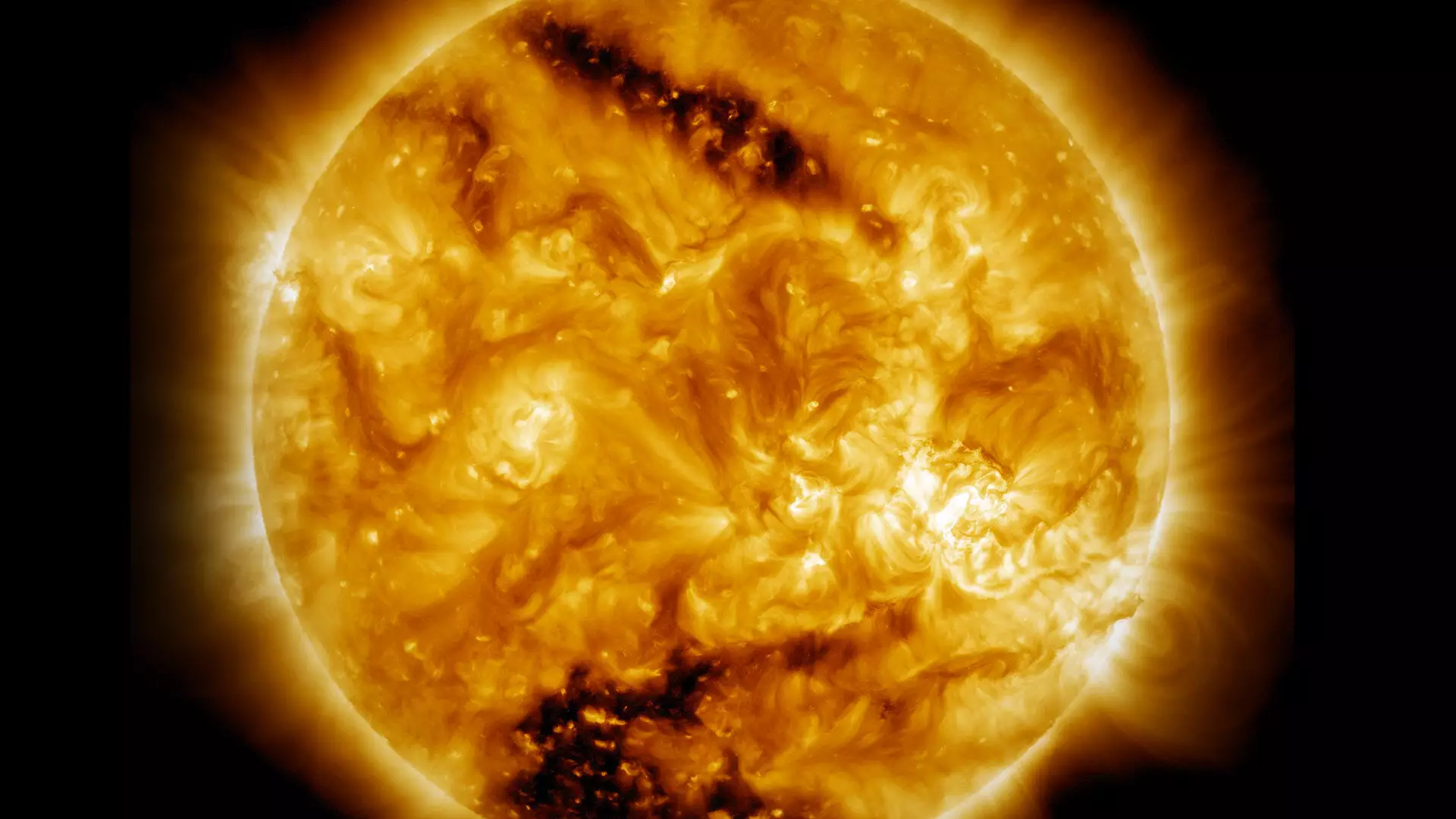The sun, a radiant ball of fusion at the center of our solar system, harbors secrets that have confounded scientists for decades. One of the most perplexing aspects is the stark difference in temperature between its surface and its outer atmosphere, the solar corona. While the surface temperature hovers around 10,000 degrees Fahrenheit, the corona soars to approximately 2 million degrees Fahrenheit. This bizarre phenomenon presents a challenge: how can the outer atmosphere of the sun be so much hotter than its surface?
This mystery first surfaced in 1939 when the high temperatures of the solar corona were first documented. Since then, tinkerers in astrophysics and solar physics have diligently combed through potential explanations, yet a definitive answer has remained ungrasped. The strange thermal gradients and the mechanisms behind this heating have haunted researchers, inviting hypotheses yet yielding no concrete conclusion. The question of what heats the corona and maintains its extreme temperatures despite the solar surface being cooler has captured the imagination of researchers across the globe.
Recent advancements by a team led by Sayak Bose at the U.S. Department of Energy’s Princeton Plasma Physics Laboratory mark a significant leap towards resolving this enigma. Their research suggests that reflected plasma waves—specifically, Alfvén waves—could be the driving force behind the heating of coronal holes. These coronal holes are areas within the corona that exhibit lower density and feature open magnetic field lines that extend into space. These findings, published in The Astrophysical Journal, signify not only a breakthrough in understanding how coronal holes are heated but also contribute to the broader understanding of solar phenomena.
Bose asserts, “Scientists knew that coronal holes have high temperatures, but the underlying mechanism responsible for the heating is not well understood.” By demonstrating that plasma wave reflection can play a pivotal role, the research teams have ushered in a new perspective on solar dynamics.
The foundational theory concerning Alfvén waves, named after the Swedish physicist Hannes Alfvén, likens the oscillations of these waves to plucked guitar strings—where vibrations are propagated through a medium, in this case, plasma influenced by magnetic fields. Utilizing the Large Plasma Device at UCLA, the researchers simulated conditions akin to those present in coronal holes. They discovered that Alfvén waves, when encountering varying plasma densities and magnetic field strengths, can reflect and generate turbulence. This turbulence, in turn, leads to heating, providing a tangible mechanism for the solar corona’s anomalous temperatures.
As Jason TenBarge, a visiting research scholar associated with the project explains, “This work provides the first experimental verification that Alfvén wave reflection is not only possible but also that the amount of reflected energy is sufficient to heat coronal holes.” This insight fleshes out a previously only hypothesized mechanism and offers empirical support for theories long held by physicists.
The robustness of this study is further established through complementary computer simulations. These simulations mirrored the laboratory experiments, corroborating the assertion that Alfvén waves can indeed reflect under conditions reflective of those around coronal holes. This dual approach—spanning both experimental verification and computational modeling—ensures a comprehensive understanding of the phenomena under investigation.
Bose emphasizes this multifaceted approach: “We routinely conduct multiple verifications to ensure the accuracy of our observed results.” The commitment to meticulous validation reinforces the credibility of the findings and showcases the intricate interplay of theoretical and practical exploration within the domain of astrophysics.
The revelations brought forth by this research elucidate a complex layer of solar physics that significantly alters our understanding of the sun’s behavior. Not only do they address a longstanding mystery, but they also enhance our grasp of fundamental plasma physics, underscoring how laboratory experiments can illuminate the intricate workings of celestial bodies. As solar research advances, it remains imperative to delve deeper into the mechanisms behind such phenomena, fostering innovations that will encompass more than just the nature of our closest star but many aspects of plasma dynamics across the universe. The collaboration across institutions like Princeton, UCLA, and Columbia highlights the importance of collective scientific endeavor in unearthing the cosmos’ secrets, laying the groundwork for future breakthroughs in understanding solar dynamics and beyond.


Leave a Reply
You must be logged in to post a comment.